Brussels printable map of top tourist attractions & city travel guide
Brussels city centre free travel guide - Top 10 must-see sights & best destinations - Brussels top tourist attractions map
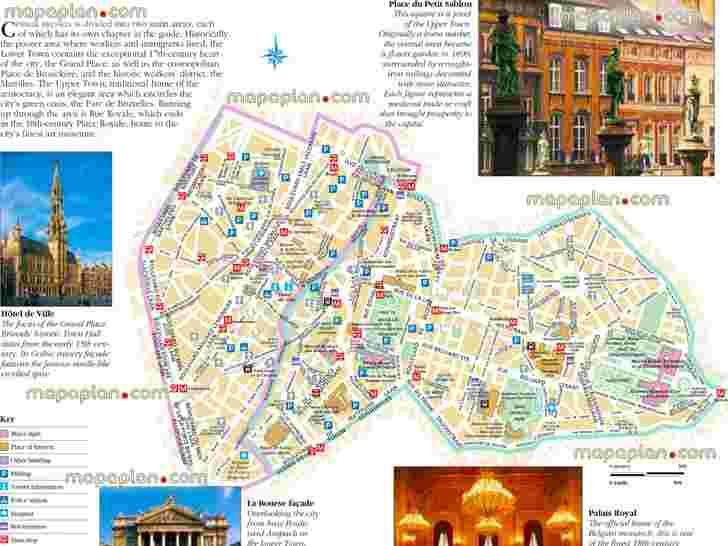
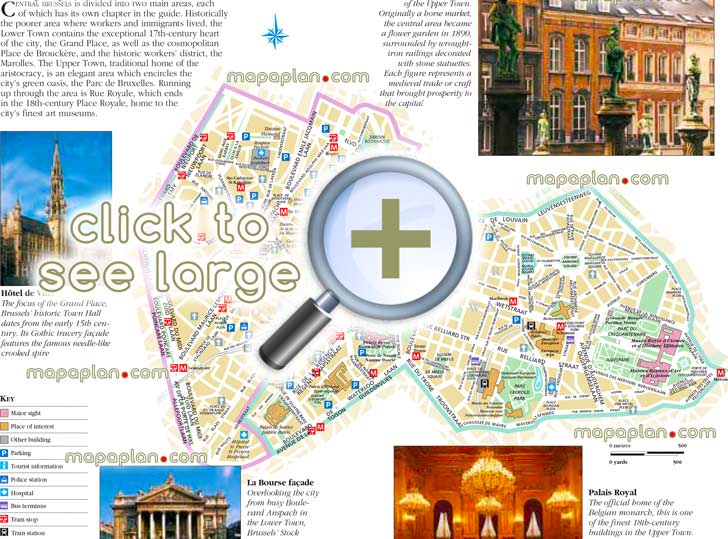
Maps of best attractions in Brussels, Belgium
Brussels maps will guide you to the best destinations in the city. The easiest way to get around the centre of Brussels is to walk, but to get from one side of the centre to the other, or to reach some of the outlying attractions, you'll need to use public transport. Central Brussels is well served by trams which encircle the old town. However, the tiny streets are often pedestrianized, and usually the quickest and most enjoyable means of transport for short distances is on foot. Otherwise metro stations are well placed. Brussels city center is small enough that walking is a viable option. The best solution is to use our maps to plan a combination of walking tours and trips on an excellent public transportation. Beyond the center, public transportation is a virtual necessity. Brussels top sights and key landmarks to visit are plotted on our detailed city plans. Public transportation points are also marked, and indicated by the symbols listed in the maps key. Armed with these maps, you should be able to find the accurate location of must-see places. Mapping out a trip to explore Brussels can be far from the usual. This page includes a range of maps and plans which will help you make the most of your visit to Brussels. If you are either a first-time tourist looking for the top 10 must-do sights or if you are returning to Brussels to discover something new - all you need to ensure an enjoyable trip is some advance planning. For some help in narrowing down the options, we present you with a range of high resolution maps which will help you find the detailed locations of the must-see sights - just click on a selected map to access a large version that can be downloaded and printed, or saved onto your mobile device. When in Brussels, you can also get free pocket-size maps of the city from the tourist information centres.
Brussels, Belgium Lower Town city center free printable interactive visitor's detailed guide map download for tourists showing inner city old town, must-see sights, sightseeing places of interest, public transport metro stations & tram stops plan - Brussels top tourist attractions map

You can view, download or print a full, high resolution (detailed, large) version of this image by clicking on the plan itself
Central Brussels Upper Town free to download offline popout English detailed guide map showing metro stations, historical streets, buildings, parks, best museums, art galleries, churches, shopping, tourist information, EU inner city centre top attractions - What to see, where to go, directions to interesting things to do - Brussels top tourist attractions map
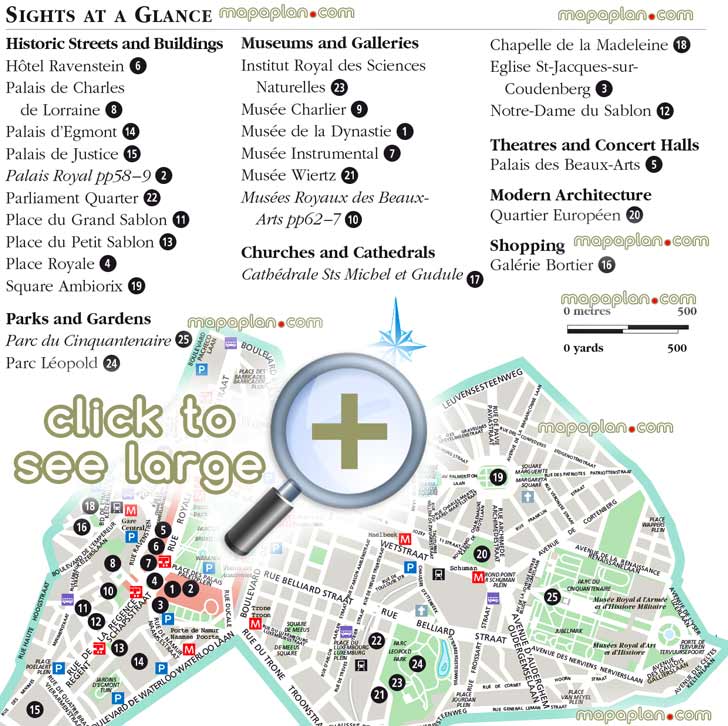
You can view, download or print a full, high resolution (detailed, large) version of this image by clicking on the plan itself
Royal Quarter (Bruxelles Quartier) interactive downloadable tourist guide for visitors map showing Royal Palace & Place - Printable detailed interactive virtual guide map showing must-see places - Travel layout English guide free download - Offline map showing attractions & places to visit - Brussels top tourist attractions map
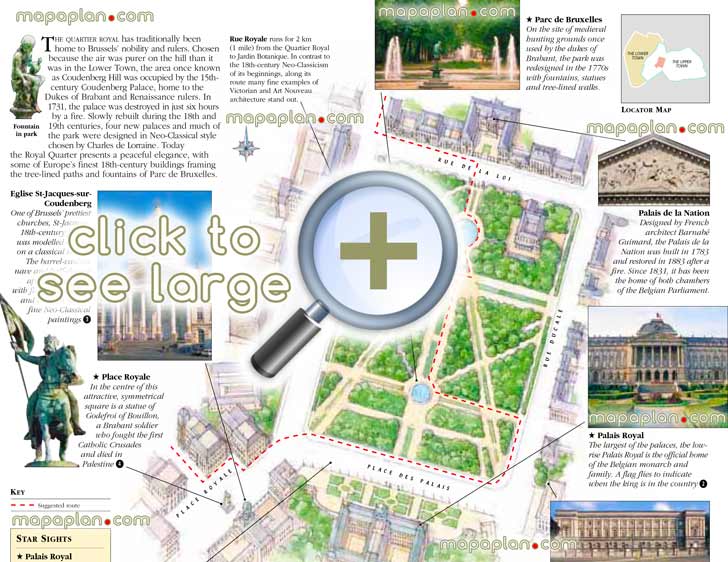
You can view, download or print a full, high resolution (detailed, large) version of this image by clicking on the plan itself
Map of Brussels metro, tram & bus - Public transport network showing subway, underground, tube, tram - Light rail stations, zones, railway routes, stops, updated transit diagram, suburban train, Airport - Brussels top tourist attractions map
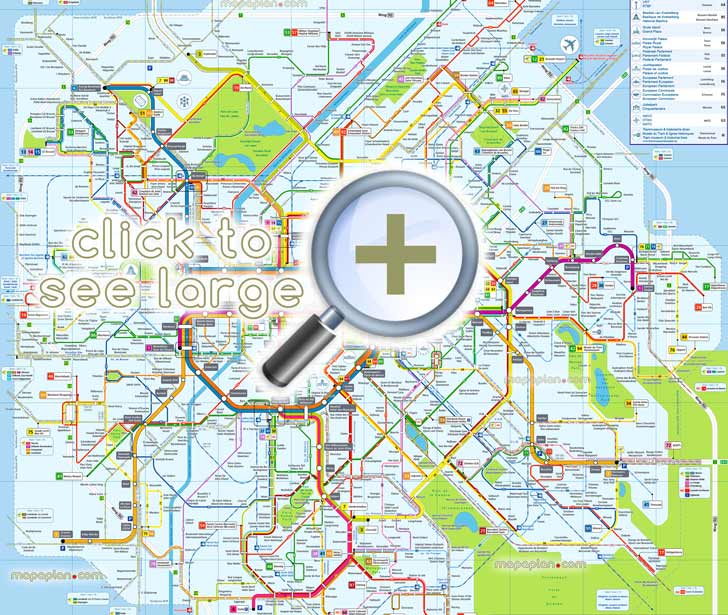
You can view, download or print a full, high resolution (detailed, large) version of this image by clicking on the plan itself
Brussels top tourist attractions map, railway train stations, tourist information centre free interactive printable detailed visitor's guide with street names, must-see destinations, best points of interest, Grand-Place, - Brussels top tourist attractions map
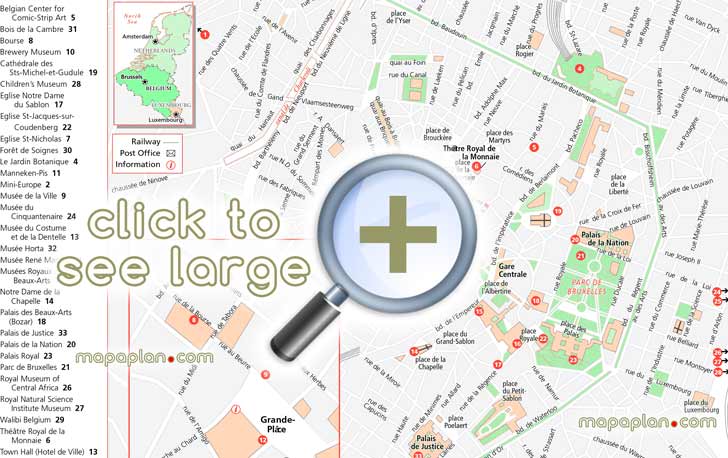
You can view, download or print a full, high resolution (detailed, large) version of this image by clicking on the plan itself
Brussels metropolitan area top highlights guide map in English - High quality large scale printable sightseeing map with list of points of interest - Itinerary planner with navigation directions to best sights, landmarks, travel sites - Brussels top tourist attractions map
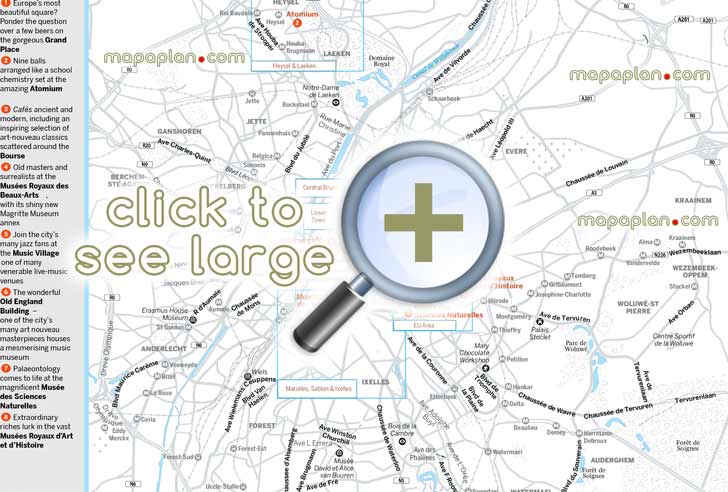
You can view, download or print a full, high resolution (detailed, large) version of this image by clicking on the plan itself
Hop-on hop-off bus map of Brussels city sightseeing tour for tourists - Visitor's 3d virtual interactive information plan with main points of interest, museums, landmarks - Double decker open top couch visitors' plan showing tour routes - Bird's eye graphical overview of the city trip highlights - Brussels top tourist attractions map
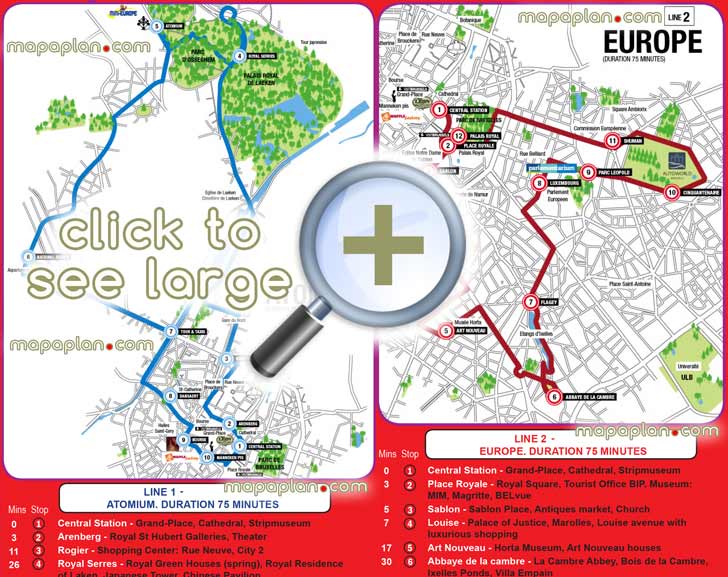
You can view, download or print a full, high resolution (detailed, large) version of this image by clicking on the plan itself
Detailed Upper Town street map of Brussels, Belgium - Free to download & print travel guide of city center, public transport metro stations, locations of major attractions, tourist information office, great historic spots, best must-see sights - Brussels top tourist attractions map
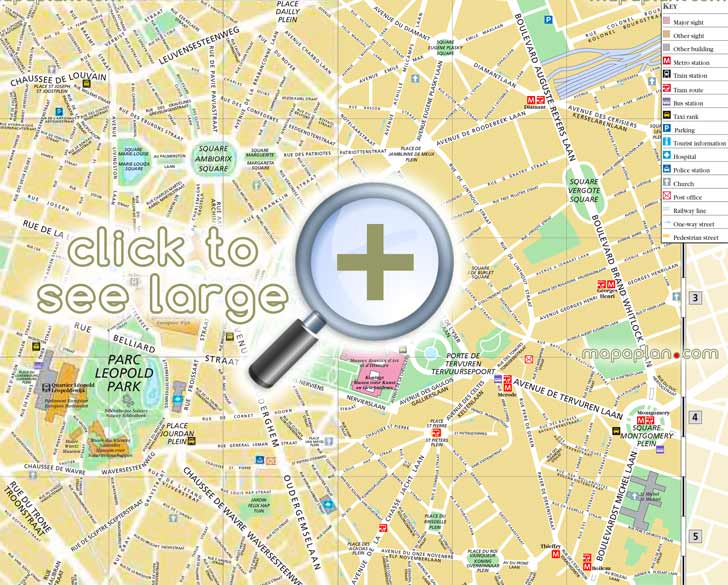
You can view, download or print a full, high resolution (detailed, large) version of this image by clicking on the plan itself
Brussels central district neighourhoods orientation map showing city centre, EU quarter, European Parliament - Free to download interactive map of directions to interesting sights, simple & easy to navigate diagram showing holiday top points of interest - Brussels top tourist attractions map
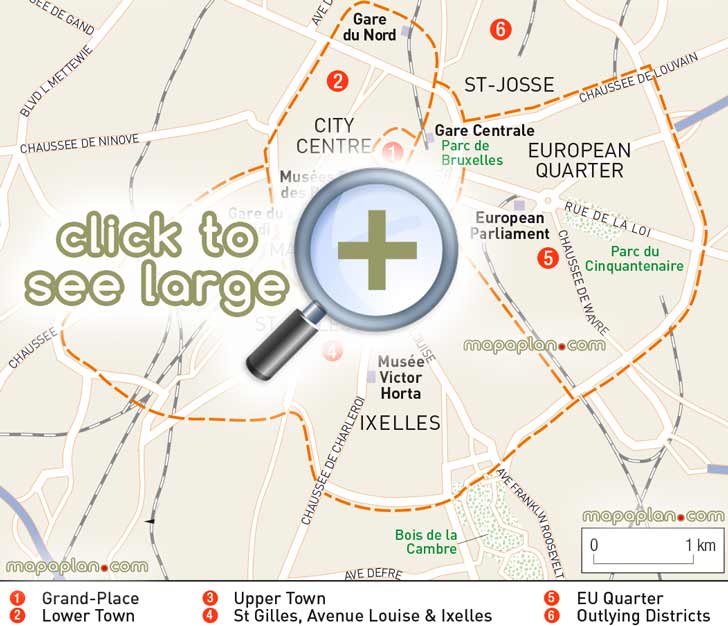
You can view, download or print a full, high resolution (detailed, large) version of this image by clicking on the plan itself
Central Brussels, Belgium city centre Lower & Upper Town detailed pop up map of must-see attractions, restaurants, hotel accommodation - Free to download street & road names detailed hd map - Brussels top tourist attractions map
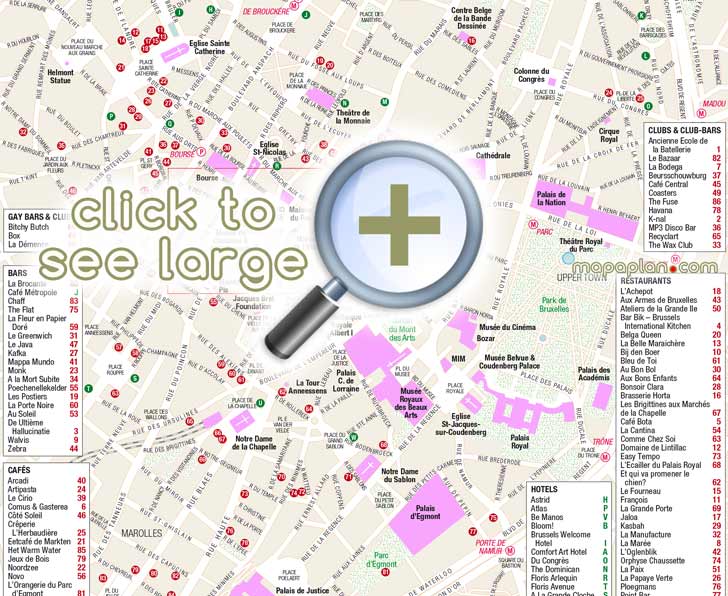
You can view, download or print a full, high resolution (detailed, large) version of this image by clicking on the plan itself
Brussels city centre Grand Place map with hotels, restaurants, old town square district area neighbourhood, Hotel de Ville, Manneken Pis - Brussels old city centre top attractions - Historic centre printable sightseeing map with the list of points of interest in old town district area neighbourhood - Brussels top tourist attractions map
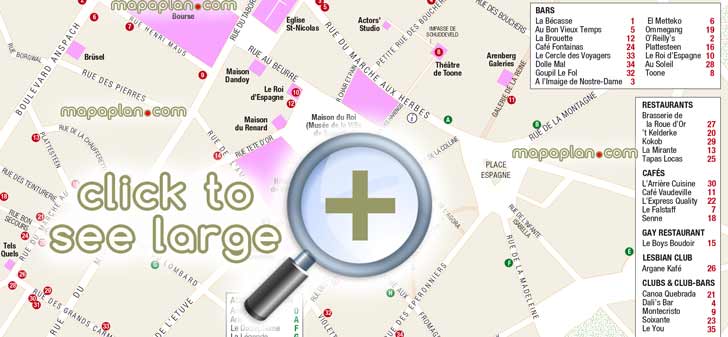
You can view, download or print a full, high resolution (detailed, large) version of this image by clicking on the plan itself
Upper Town city map of Brussels, Belgium showing 1-day trip travel locations to visit, must-see tourist attractions, famous destinations, must-do spots & landmark destinations - Download the free virtual explorer plan showing interesting sites & hot spots worth visiting - Brussels top tourist attractions map
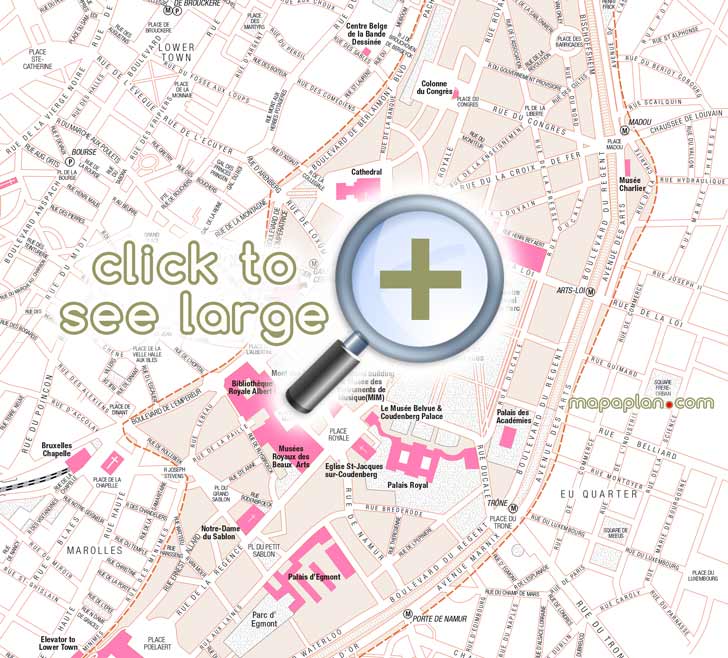
You can view, download or print a full, high resolution (detailed, large) version of this image by clicking on the plan itself
Lower Town attractions showing areas West, North & South of the Grand-Place - Visitor's detailed virtual printable guide to download - Old town and inner city center walking tour guide itinerary planner map with favourite attractions & points of interest to visit by tourists - Brussels top tourist attractions map

You can view, download or print a full, high resolution (detailed, large) version of this image by clicking on the plan itself
EU Quarter & Parc du Cinquantenaire virtual interactive 3d aerial satellite detailed view map showing orientation & navigation directions map showing European Parliament - Brussels top tourist attractions map
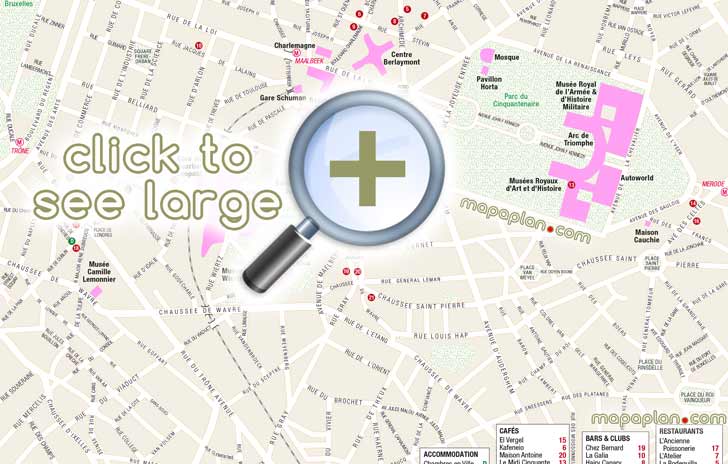
You can view, download or print a full, high resolution (detailed, large) version of this image by clicking on the plan itself
St Gilles map of attractions, Gare du Midi train station, hotels restaurants - Walking tour guide itinerary planner showing layout of best things to do - Brussels top tourist attractions map
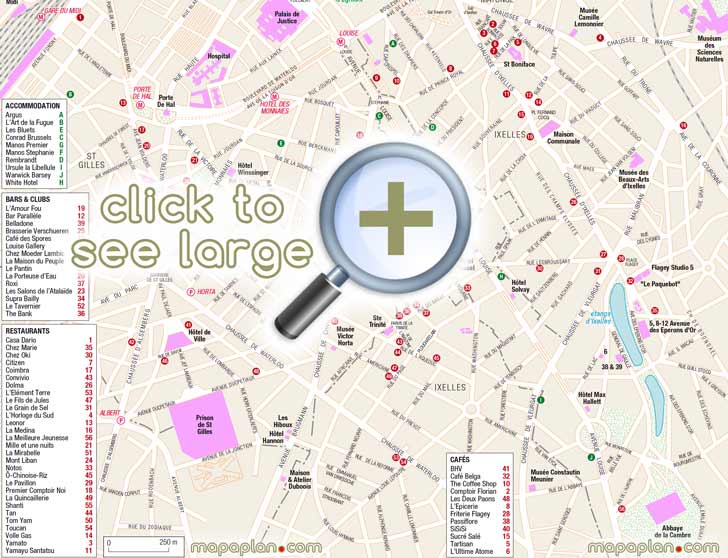
You can view, download or print a full, high resolution (detailed, large) version of this image by clicking on the plan itself
Brussels city center offline 3d interactive guide jpg map of main streets, sightseeing downtown attractions, metro & main train stations - Interactive walking trip downloadable itinerary planner to print & guide map showing best destinations to visit - Central district area outline layout map of best locations - Brussels top tourist attractions map
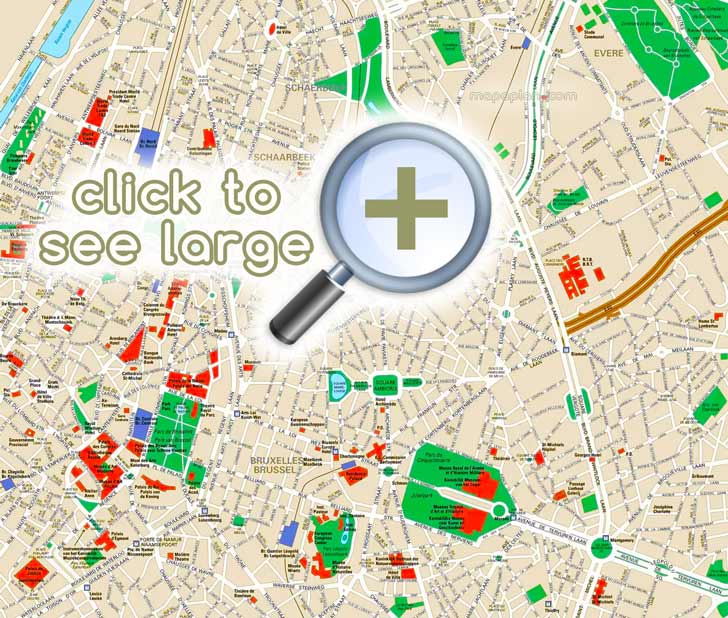
You can view, download or print a full, high resolution (detailed, large) version of this image by clicking on the plan itself
Brussels EU quarter buildings map - European Parliament institutions district area, city-break historical places to visit - Brussels top tourist attractions map
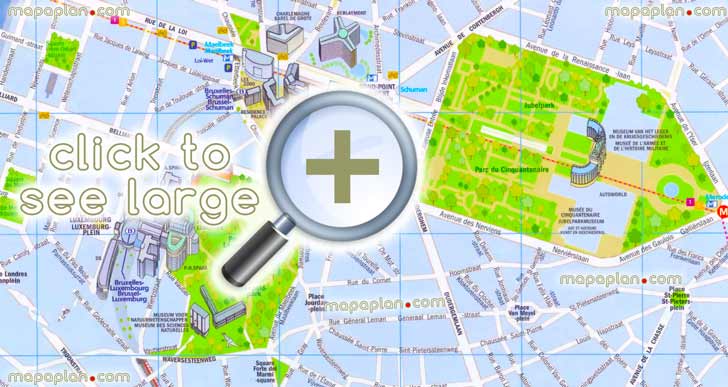
You can view, download or print a full, high resolution (detailed, large) version of this image by clicking on the plan itself
Greater Brussels metropolitan area free to download printable detailed guide map showing nearby attractions, road to airport, Atomium, cities, main neighbourhoods - Brussels top tourist attractions map
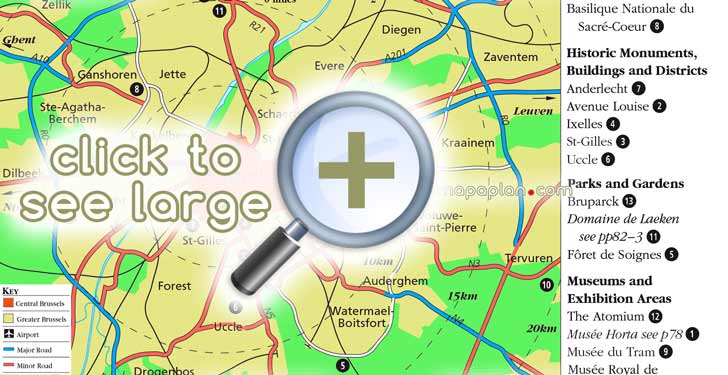
You can view, download or print a full, high resolution (detailed, large) version of this image by clicking on the plan itself
Brussels location on the map of Belgium, Europe - Brussels top tourist attractions map
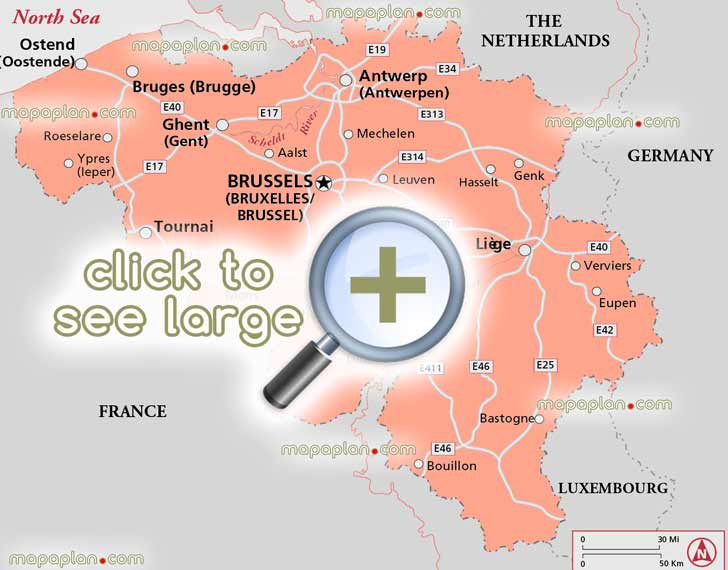
You can view, download or print a full, high resolution (detailed, large) version of this image by clicking on the plan itself
Map of top 10 attractions in Brussels
The typical top ten attractions are listed below. You can find the detailed locations of these places on the maps above.
- Grand Place (Grote Markt) - Quite simply the most theatrical medieval square in Europe, with a magnificent array of gabled guild houses and a spectacular town hall. The geographical, historical & commercial heart of the city, the Grand Place is the first port of call for most visitors to Brussels. It is quite simply one of the most uniformly beautiful enclosed city squares in the world. This bustling cobblestone square remains the civic centre, centuries after its creation, and offers the finest surviving example in one area of Belgium's ornate 17th-century architecture. Open-air markets took place on or near this site as early as the 11th century, but by the end of the 14th century Brussels' town hall, the Hotel de Ville, was built, and city traders added individual guildhouses in a medley of styles.
- Hotel de Ville - From the south side of the Grand-Place, the newly scrubbed and polished Hotel de Ville, or town hall, dominates proceedings, its 96-metre spire soaring high above two long series of robust windows, whose straight lines are mitigated by fancy tracery, striking gargoyles, solid statuettes and an arcaded gallery.
- St. Michael and St. Gudula Cathedral - Although more than a little plain to look at, both outside and inside, compared to the generally extravagantly decorated run of Gothic cathedrals, St-Michel's, dedicated to the city's patron St. Michael, and to St. Gudula, has much to commend it.
- Manneken-Pis - The centuries-old fountain- statue of a small boy making water with a 'what-a-clever-boyam- I' look on his face, has become a much-loved symbol of the city.
- Our Lady of the Chapel (Notre-Dame de la Chapelle) - This Romanesque-Gothic church is interesting both historically and architecturally.
- Place Royale - Brussels royal square stands at the meeting point of rue de la Regence and rue Royale, two streets that hold many of the city's premier attractions.
- Royal Palace (Palais Royal) - The King's Palace, today is used for state receptions.
- Belgian Comic Strip Center (Centre Belge de la Bande Dessinee) - A Victor Horta–designed department store hosts this temple to Belgian and international cartoons. Pride of place goes, naturally, to Herge's beloved Tintin.
- Parc de Bruxelles - Opposite the Palais Royal, the Parc de Bruxelles is the most central of the city's larger parks, along whose tree-shaded footpaths civil servants and office workers stroll at lunchtime, or race to catch the Metro in the evenings.
- Royal Fine Arts Museum (Musees Royaux des Beaux-Arts) - Brussels' major gallery covers everything from early Flemish painting to surrealist master Magritte, who has his own dedicated gallery. Don't miss Bruegel's Fall of Icarus. A few metres from place Royale, at the start of rue de la Regence, the Musees Royaux des Beaux Arts comprises two interconnected museums, one displaying modern art from the nineteenth century onwards, the other older works. Brueghel, Rubens, Van Dyke, Magritte – this splendid collection takes the visitor on a tour of some of the greatest names in art.
- Musical Instrument Museum (MIM, Musee des Instruments de Musique) - Newly rehoused in a magnificent Art Nouveau building, the 'MIM' contains thousands of instruments – ancient, modern, ethnic and just plain wacky.
- Horta Museum (Musee Horta) - Victor Horta was the original Art Nouveau architect; his own house was the perfect expression of his art – down to the last doorknob. The building is now preserved as a shrine to Art Nouveau.
- Parc du Cinquantenaire - The EU district boasts the spacious and leafy Parc du Cinquantenaire, ringed by impressive museums including a military museum and one dedicated solely to cars. The Golden Jubilee Park has extensive gardens which at their heart have a triumphal arch topped by a bronze four-horse chariot sculpture, representing Brabant Raising the National Flag.
- Sablon District - The Sablon district anchors the southern end of the Upper Town and in its midst is place du Petit Sablon, a small rectangular area which was laid out as a public garden in 1890 after previous use as a horse market.
- Place du Grand Sablon - The Upper Town's most elegant square, perfect for hanging out on a summer's afternoon.
- Place du Jeu de Balle Page - Not as cheap as it once was, but still what a flea market should be, full of delectable old junk.
- Atomium - Stand Under the Seven Giant Spheres of the Atomium and hope that none of the giant spheres of this colossal representation of an iron atom will fall on your head.
- Other popular attractions worth visiting include: Musee Gueuze, Maison du Roi, Museum of Modern Art, Museum of Natural Sciences, Mini Europe, Autoworld, Planète Chocolat (chocolatier factory) tour, Bourse (Stock Exchange).
What are some interesting facts about Brussels?
Tourist information centre - The city tourist office is Brussels International Tourism, at the Hotel de Ville (Town Hall). You can pick up visitor's guides and maps here. This includes a fairly detailed street map of the inner city, with the main tourist attractions marked.
Getting around - Central Brussels is well served by trams which encircle the old town. However, the tiny streets are often pedestrianized, and usually the quickest and most enjoyable means of transport for short distances is on foot. Otherwise metro stations are well placed. Brussels city center is small enough that walking is a viable option, but it's not that small and traffic can be heavy and frantic, adding up to a tiring experience. The best solution if you have several days is to slice your time into segments for walking tours. Otherwise, a combination of walking and using the excellent public transportation is best. Beyond the center, public transportation is a virtual necessity.
Public transport - Detailed maps of the integrated transit network - Metro (subway ), tram (streetcar), and bus - are available free from the tourist information office.
Orientation - The centre of Brussels is contained within a clearly defined shape called the Pentagon. Nowadays this outline is formed by a busy ring road called the Petite Ceinture. The road follows the path of the old city walls, a huge 14th-century construction 9 km (6 miles) long. Few traces of the walls have survived, but one old city gate, the Porte de Hal, still stands, and gives a fair indication of just how massive the fortifications must have been. Most of historic Brussels is contained within these bounds, including both the commercial and popular districts of the Lower Town, and the aristocratic quarter of the Upper Town, which includes the Royal Palace. The result is that Brussels is still a very compact city. You can walk right across the Pentagon in about half an hour. As well as monuments and cultural gems, you will find a concentration of excellent places to stay and eat, good shops, and vibrant cafes and bars.
City layout - Brussels is flat in its center and western reaches, where the now-vanished River Senne once flowed. To the east a range of low hills rises to the upper city, which is crowned by the Royal Palace and has some of the city's most affluent residential and prestigious business and shopping districts. The Grand-Place (Grote Markt in Dutch) stands at the very heart of Brussels, and is both a starting point and reference point for most visitors. An excellent railway network runs almost directly through the middle of the city, with Gare du Nord (Noord Station) just across the northern rim of the Petite Ceinture, Gare Centrale (Centraal Station) in the city center not far from the Grand-Place, and Gare du Midi (Zuidstation) near the southern rim.
How can I find specific tourist attractions on the map of Brussels?
Our interactive city maps are easy to explore. You can pan, zoom in, and zoom out on the high-resolution map to locate major tourist attractions. Each map highlights key landmarks, making it simple to find the sights you're most interested in, whether it's a famous monument, museum, or other point of interest.
Can I get a visual representation of the area around Brussels?
For some cities, we provide a general view of the area surrounding popular attractions. While this image won't show the exact street-level view, it helps you understand the layout of the neighborhood, showing how the landmarks are situated in relation to other points of interest around Brussels.
Can I explore maps for both tourist attractions and other points of interest?
Yes! Our platform offers maps covering a range of highlights, from top tourist attractions to other noteworthy areas such as parks, restaurants, and entertainment venues. Whether you're planning a visit to a museum or looking for a nearby park, our detailed maps make it easy to find the best spots in the city.
Related keywords
2023, 2024, 2025, 2025, 2026, 2027, 2028, 2029, map, plan, download, print, printable, free, detailed, aerial, bird's eye, satellite, guide, planner, travel, sightseeing, visit, trip, tour, tourist, what to do, where to go, things to do, must see, top attractions, points of interest, places, sites, sights, buildings, spots, destinations, locations, landmark, museum, in a week, in 3 days, one day, city, route, bus, kids, children, top 10, top ten, popular, famous, interesting, highlights, public transport, rail, hotels, updated, metro, subway, underground, tube, downtown, coach, nightlife, pub, monument, satellite, accommodation, transit, transportation, supermarket, children, metro, subway, underground, tube